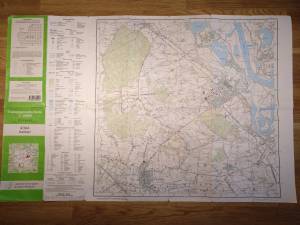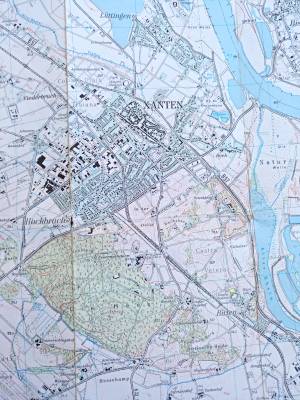This is an old revision of the document!
Table of Contents
Aerial Archaeology: Roman Fort Castra Vetera I
Task: We will study the power of aerial photography and GIS for archeological prospection. The skills we will learn are
- how to georeference images such as photographed or scanned maps as well as aerial photographs,
- how to digitize elements from a georeferenced image.
Background: 2000 years ago the lower Rhine area played an important role in Roman history. The river was the border between the Roman empire (west of the Rhine) and ancient Germania (east of the Rhine). Much of the European history and its current way of life was strongly influenced by the Roman Empire and earlier the Greek and Middle East Empires.
North of modern Xanten was a major Roman city called Colonia Ulpia Traiana (CUT), which has been partly reconstructed. It is now the core of the Archaeological Park Xanten (APX).
South of modern Xanten, at the top of the Fürstenberg hill, was the important Roman castle Castra Vetera I. It was operated for several decades and modified several times. It is mainly known for its role in the Neronian phase, i.e. the times of emperor Nero up to 70 CE (CE: current epoque).
| Roman Settlements in Modern Xanten Area |
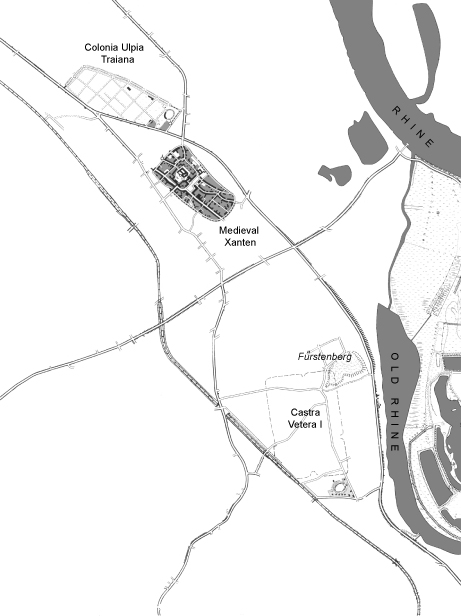 |
| Medieval Xanten, Colonia Ulpia Traiania and Vetera I (by P. A. Faulkner). Source: http://intarch.ac.uk/journal/issue17/4/4.html |
| Castra Vetera I and Colonia Ulpia Traiana | |
 |  |
| Colonia Ulpia Traiana (by Dießenbacher Informationsmedien). Source: http://www.zeitreise-ruhr.de/chronik/060-roemerundgermanen.html | Castra Vetera I (by Dießenbacher Informationsmedien). Source: http://www.zeitreise-ruhr.de/chronik/060-roemerundgermanen.html |
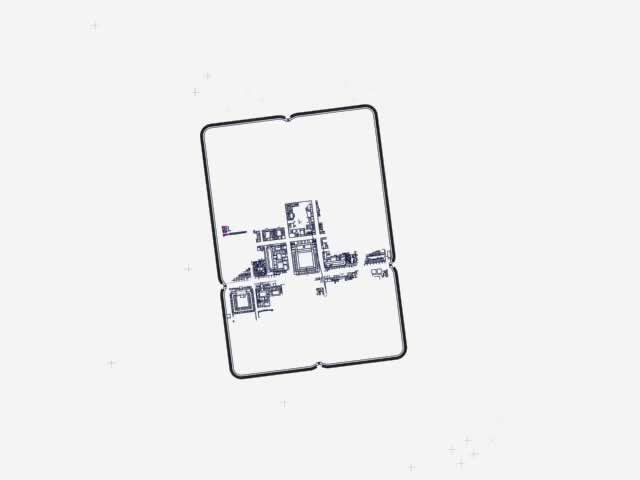 | 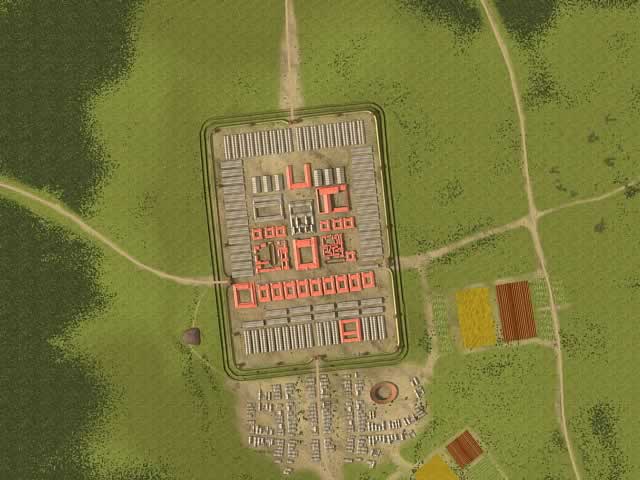 |
| Vetera I, secured ground plan (by Dießenbacher Informationsmedien) | Vetera I, reconstruction (by Dießenbacher Informationsmedien) |
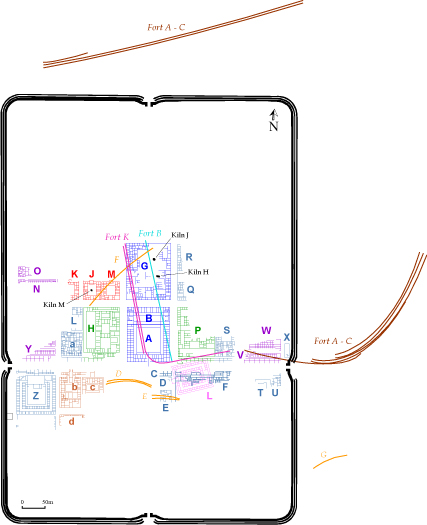 | 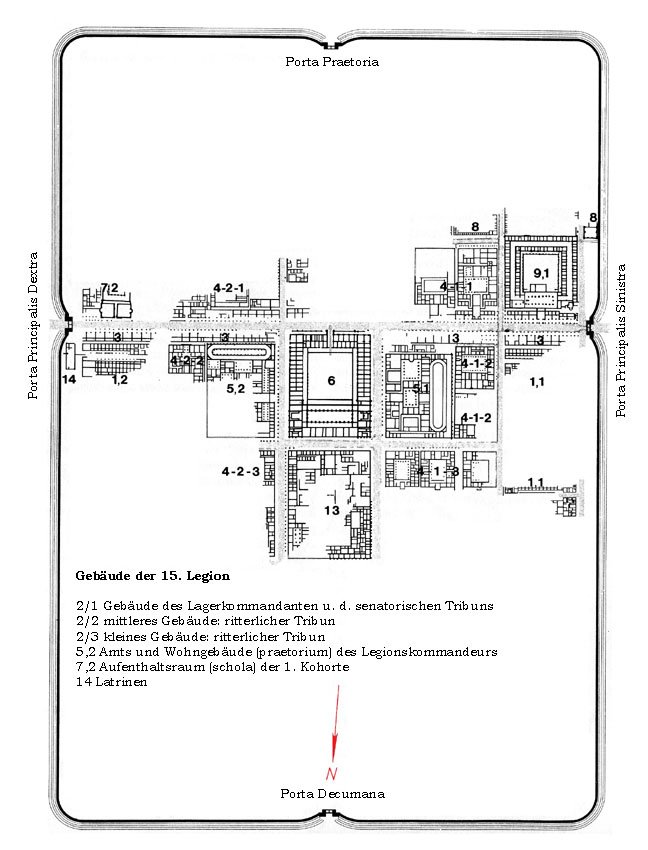 |
| Vetera I, Neronian fort, showing building numbers, kilns and fortifications of earlier forts (by P. A. Faulkner). Source and Legend: http://intarch.ac.uk/journal/issue17/4/4.html | Source: http://www.roemisches-rheinland.com/Wissen/Festes-Lager |
Exercises / Homework
1) Interactive Presentation of Roman History around Xanten

Play with the interactive presentation The Xanten Area in Ancient Times: http://xanten.afg.hs-anhalt.de/desk30.html
Questions:
What was the Castra Vetera I and where was it located? Until when did it exist and what caused its abrupt end? Who were the Batavi? Which was their main settlement?
2) Georeference Maps and Images to Locate Vetera I
Interestingly you do not find any information about the location of Vetera I on recent topographic maps. Older editions do outline the approximate location of the castle. The map below indicate the castle's approximate location with a thin dashed line.
Photo of older German Topographic Map DTK25, No. 4304, Xanten, 14th edition, 1998
DTK25, No. 4304, Detail Fürstenberg
Tasks
1) Use the georeference tool to align the photographed map above with a current digital topographic map form open data NRW.
Perform a non-linear transformation to georeference the map photo
To georeference (= transform, correct) the photo I have taken from the topographic map a “Linear Transformation” is not appropriate. The image is mainly rotated (a non-linear transformation) and (linearly) distorted by perspective. The photo has not been taken perfectly orthogonally to the map plane. The transformation “Thin Plate Spline” does a good job. I cannot explain for now what it exactly is. The screenshot below shows the satisfying result after the non-linear transformation to correct the image. The locally different transformation of the image (dependent on the location on the image) are obvious. I do not know yet how to handle the black background of the rotated image on the vertically aligned rectangular canvas.
3) Aerial Archaeology
The Ruhr-Universität Bochum has an Archaeology department by which several projects had been performed to investigate ancient Vetera I. Read the web page presenting results of aerial photography around Vetera I: http://www.ruhr-uni-bochum.de/archaeologie/forschung/projekte/luftbildxanten.html.en
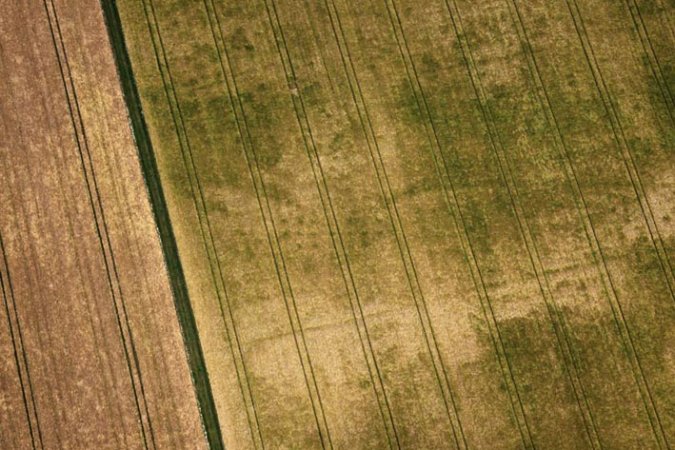 | 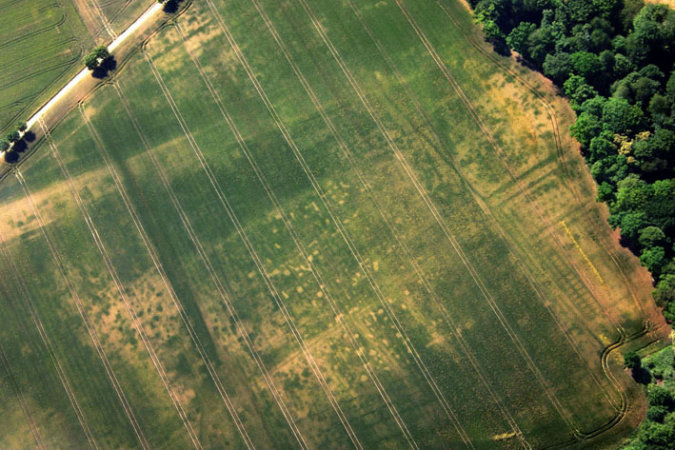 | 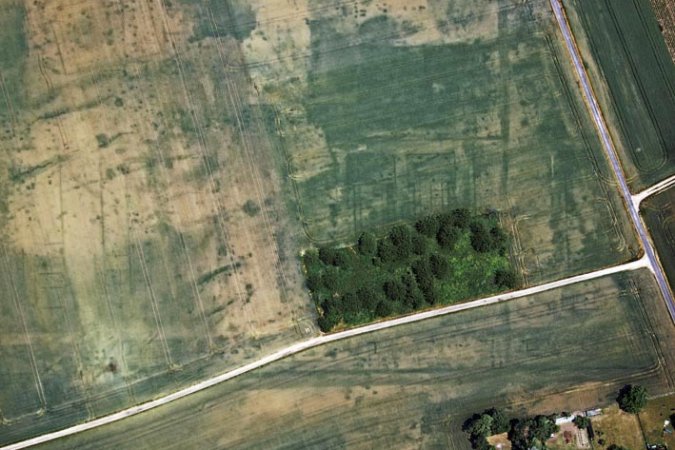 |
| Fig. 1: The gate of the Neronian encampment. | Fig.2: “Streifenhäuser” along the east leading road. | Fig. 3: Traces of the eastern breastwork of the camp. |
| Source: Baoquan Song (Ruhr-Uni Bochum), Norbert Hanel (Uni Köln): http://www.ruhr-uni-bochum.de/archaeologie/forschung/projekte/luftbildxanten.html.en |
||
Where are these features located on the Fürstenberg? Try to georeference them.

